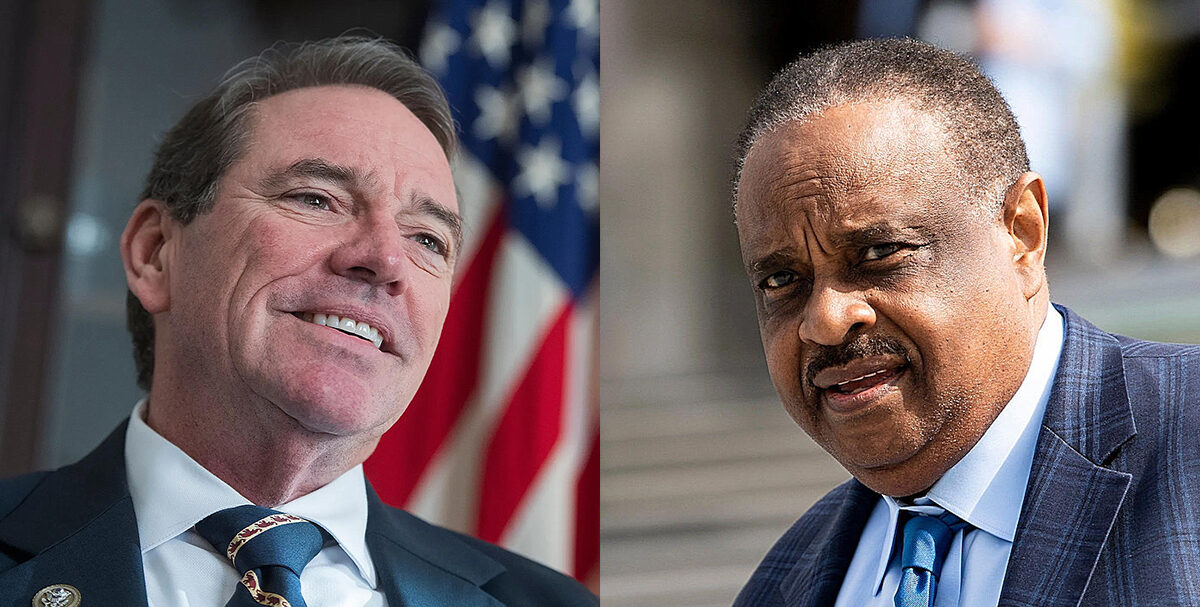
The electorate who was registered to vote in the Aug. 23 Primary Election is split fairly evenly within six of Florida’s 28 congressional districts, though Republicans hold slight advantages in each of those areas heading toward the November General Election.
The voter registration book closing for the Aug. 23 Primary Election showed Florida had 14.3 million eligible voters registered for that contest, with between 407,000 and 588,000 voters registered in each of Florida’s 28 congressional districts.
Statewide, Republicans held the upper hand, with 5.2 million voters, compared with just under 5 million registered Democrats in the latest count. Another 4.2 million voters were registered without a party affiliation or aligned with one of the eight “minor” parties recognized by the Division of Elections, such as the Libertarian Party or the Green Party.
Florida’s voter party registrations have been trending in Republicans’ favor for several years. Republican Gov. Ron DeSantis and the GOP-controlled Legislature created new congressional district maps this year that exploit those voter advantages, with the possibility of electing more Republicans to Congress.
Heading into the fall campaign for the General Election, the latest official voter registration counts show Republicans have what likely would be an insurmountable edge in voter registrations — an advantage of more than 15 percentage points over Democrats — in eight congressional districts, under the new map. Democrats have such an advantage in six districts.
Republicans have advantages that are strong but not outside the prospect of an upset — more than 5 percentage points yet fewer than 15 points — in seven more districts. Democrats have that sort of advantage in two districts.
The remaining six districts are close in voter registration counts between Republicans and Democrats, though Republicans have slight advantages in all of them:
— In Florida’s 15th Congressional District, essentially Florida’s new district, serving the Polk County area of the Interstate 4 corridor, Republicans have just 1,700 more voters than Democrats within an electorate of 472,000, amounting to a GOP advantage of just 0.4 percentage points.
That’s a much weaker advantage than the results of the past couple of General Elections would suggest, indicating the independent and minor party voters in CD 15 likely lean conservative.
Independent and minor party voters make up 31% of the CD 15 electorate.
There, former Republican Secretary of State Laurel Lee and Democrat Alan Cohn are battling for an open seat.
— In Florida’s 2nd Congressional District in the Panhandle, Republicans hold a 3,700 voter advantage, which is about 0.7% of the electorate.
That is a much tighter Republican edge than the past couple of General Elections would suggest. Former President Donald Trump won the precincts now gathered into that district by at least 7 percentage points in both the 2016 and 2020 elections.
Independent and minor party voters make up just 20% of the CD 2 electorate.
Two incumbent congressional members are in a showdown there: Republican U.S. Rep. Neal Dunn and Democratic U.S. Rep. Al Lawson.
— In Florida’s 27th Congressional District in Miami, Republicans hold a 3,900-vote advantage, about 0.9% of the electorate.
That suggests more of a Republican advantage, compared with how voters there voted in the past couple of General Elections. Trump actually lost the popular vote count in what are now the CD 27 precincts in 2016, and barely won the vote there in 2020.
Independent and minor party voters combine for 33% of the electorate, nearly even with Republicans and slightly greater than Democrats.
Republican U.S. Rep. Maria Elvira Salazar is being challenged by Democratic state Sen. Annette Taddeo.
— In Florida’s 28th Congressional District in Miami, Republicans have 5,800 more registered voters, an advantage of about 1.3% of the total electorate.
That district has swung widely across the past two General Elections. Trump was outvoted in those precincts in 2016, and then carried the area by 6% in 2020
CD 28 has more independent voters than either Republicans or Democrats. Independents make up 35% of the electorate.
Republican U.S. Rep. Carlos Giménez is being challenged by former Democratic state Rep. Robert Asencio.
— In Florida’s 4th Congressional District in the Jacksonville area, Republicans hold an advantage of about 12,500 votes, or about 2.3% of the electorate.
That spread is much tighter than the results of the past General Elections. Trump carried the area in each of those elections by at least 4.9 points.
Just 23% of the CD 4 voters are registered as independents or to minor parties.
Republican state Sen. Aaron Bean faces Democrat LaShonda Holloway for the open seat there in the General Election.
— In Florida’s 7th Congressional District, Republicans hold a 25,000-vote advantage, about 4.4% of the electorate.
That is just slightly a smaller spread than Trump enjoyed in the region in the past two General Elections.
Independent or minor voters make up 32% of the electorate, slightly more than Democrats.
Republican Cory Mills faces Karen Green for the open seat there.
Republicans have strong advantages in voter registration, between 5 and 15 points, in Florida’s 3rd, 11th, 13th, 16th, 18th, 21st and 26th Congressional Districts.
Democrats have strong advantages in voter registration in Florida’s 14th and 23rd Congressional Districts.
Republicans have nearly insurmountable advantages in voter registrations, more than 15 points, in Florida’s 1st, 6th, 8th, 12th, 17th and 19th Congressional Districts, and already have won Florida’s 5th Congressional District, which re-elected Republican U.S. Rep. John Rutherford in the Primary Election.
Democrats have nearly insurmountable advantages in voter registrations in Florida’s 9th, 10th, 20th, 22nd, 24th and 25th Congressional Districts.



